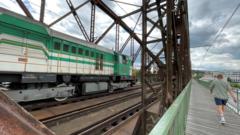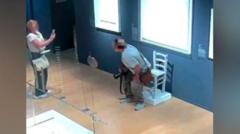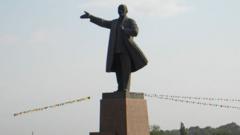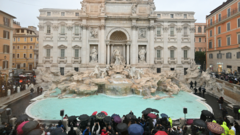In the heart of Prague, a city celebrated for its storied architecture and history, a battle is brewing over the future of the Vysehrad railway bridge, an iconic structure that has stood for 123 years. As plans move forward for the bridge's replacement, strong voices from the local community and preservationists argue against what they see as an unnecessary demolition of a vital part of the city's skyline.
Architect and bridge engineer Petr Tej, a member of the Vysehrad Bridge Foundation, passionately defends the bridge’s significance. "I think this bridge is absolutely key to Prague," he shared while examining the bridge's aged structure. "The panorama it forms with the Vysehrad fortress behind it is as crucial as that of Charles Bridge and Prague Castle."
Despite the bridge's rusting girders, Tej and his coalition of experts argue that its structural integrity can be largely salvaged. Their studies suggest that only 15% of the steel needs replacement, contrary to official reports claiming a much higher figure of 70%. With over 25,000 residents backing their petition for restoration, the foundation has gained substantial public support.
On the other side of the debate is Pavel Paidar, Director of the Railway Authority's Construction Preparation Department. He expresses concern that the historical structure is outdated and inadequate for the growing demands of Prague's rail traffic. "This bridge currently manages about three-quarters of the city’s railway traffic but can only carry roughly 60% of its capacity due to corrosion," Paidar explained. He emphasized the urgent need for a new bridge to accommodate projected increases in rail travel.
The proposed new structure would introduce a third track and aims to maintain a visual connection to the original bridge design. Meanwhile, the old bridge is scheduled to be relocated approximately 8 kilometers south to serve as a pedestrian and cyclist crossing in Modrany, an idea criticized by activists who feel it would disrupt the charm of the local landscape.
Philanthropist Tomas Bistricky, alongside others in the Vysehrad Bridge Foundation, advocates for a solution that merges modern transport needs with the preservation of Prague’s cultural landmarks. "Our studies show there's no conflict between transport efficiency and preserving our heritage," he asserts, calling for a dual approach to enhance transport capabilities while still cherishing Prague's historical identity.
As this debate unfolds, it underscores a quintessential challenge for cities like Prague — balancing the pull of modern innovation with the preservation of rich architectural legacies. The decision ahead will not only impact railway infrastructure but also the character of this historic city.
TransportPragueInfrastructureCzech Republic
Architect and bridge engineer Petr Tej, a member of the Vysehrad Bridge Foundation, passionately defends the bridge’s significance. "I think this bridge is absolutely key to Prague," he shared while examining the bridge's aged structure. "The panorama it forms with the Vysehrad fortress behind it is as crucial as that of Charles Bridge and Prague Castle."
Despite the bridge's rusting girders, Tej and his coalition of experts argue that its structural integrity can be largely salvaged. Their studies suggest that only 15% of the steel needs replacement, contrary to official reports claiming a much higher figure of 70%. With over 25,000 residents backing their petition for restoration, the foundation has gained substantial public support.
On the other side of the debate is Pavel Paidar, Director of the Railway Authority's Construction Preparation Department. He expresses concern that the historical structure is outdated and inadequate for the growing demands of Prague's rail traffic. "This bridge currently manages about three-quarters of the city’s railway traffic but can only carry roughly 60% of its capacity due to corrosion," Paidar explained. He emphasized the urgent need for a new bridge to accommodate projected increases in rail travel.
The proposed new structure would introduce a third track and aims to maintain a visual connection to the original bridge design. Meanwhile, the old bridge is scheduled to be relocated approximately 8 kilometers south to serve as a pedestrian and cyclist crossing in Modrany, an idea criticized by activists who feel it would disrupt the charm of the local landscape.
Philanthropist Tomas Bistricky, alongside others in the Vysehrad Bridge Foundation, advocates for a solution that merges modern transport needs with the preservation of Prague’s cultural landmarks. "Our studies show there's no conflict between transport efficiency and preserving our heritage," he asserts, calling for a dual approach to enhance transport capabilities while still cherishing Prague's historical identity.
As this debate unfolds, it underscores a quintessential challenge for cities like Prague — balancing the pull of modern innovation with the preservation of rich architectural legacies. The decision ahead will not only impact railway infrastructure but also the character of this historic city.
TransportPragueInfrastructureCzech Republic





















